The Nhổn-Hà Nội metro line operates at an average commercial speed of 35 km/h, with 8 trains running simultaneously, one backup train for peak hours when overloaded, and one rescue train for emergencies.
On the morning of December 6th, the Nhổn-Hà Nội metro train was tested in automatic operation mode at a maximum speed of 80 km/h, traveling from station S1 to station S8 (Nhổn-Cầu Giấy) to check the train’s operations and the synchronization between the information system, train signals, and control systems.
Testing the Nhổn-Hà Nội metro train at a speed of 80 km/h. (Video: Phạm Chiểu)
According to the project management board, this is an important step in the dynamic testing process of the train, serving as a preliminary inspection for trial operation and an independent assessment of train operational safety.
The Nhổn-Hà Nội metro line is 12.5 km long, consisting of 8.5 km elevated and 4 km underground.
The project includes 10 trains manufactured in France, each consisting of 4 cars, capable of carrying 944-1,124 passengers, with a density of approximately 6.6-8 passengers/m².
Inside the passenger cabin, the train is equipped with a public address system, cameras with direct observation screens in the cabin to promptly handle emergencies, an independent fire and smoke detection system, and LED lights that automatically adjust brightness when entering underground sections…
The Nhổn-Hà Nội metro line operates at an average commercial speed of 35 km/h, with 8 trains running simultaneously, one backup train for peak hours when overloaded, and one rescue train for emergencies.
After undergoing static acceptance testing in the Depot (both powered and unpowered), testing on the main line, and integration with the project’s equipment systems; after trial operation acceptance testing and handover acceptance, the trains will be put into service.
During a site inspection and the implementation of the pilot urban railway project in Hanoi, specifically the Nhổn-Hà Nội segment, Secretary of the Hanoi Party Committee Đinh Tiến Dũng directed that the progress stated in the joint declaration of the Vietnamese and French governments must be closely followed; with the goal to complete the elevated section of 8.5 km by 2022 and the underground section of 4 km by 2025, bringing the entire line into operation; considering this a legally binding timeline for implementation. For the elevated section, to ensure operation in 2022, construction progress must strive to be completed before October 15, 2022.
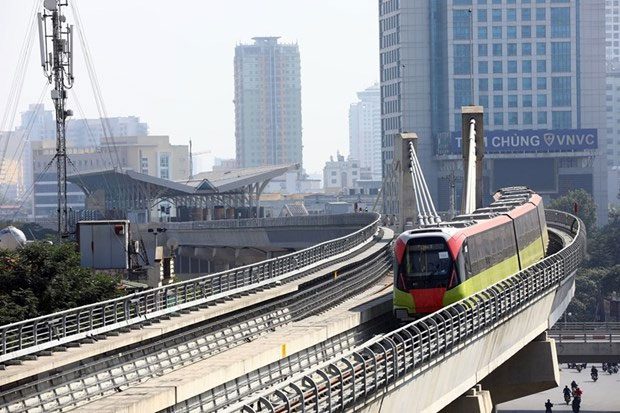
The testing is to check the operation of the train, the synchronization between the information system, train signals, and control systems. (Photo: Huy Hùng/TTXVN)
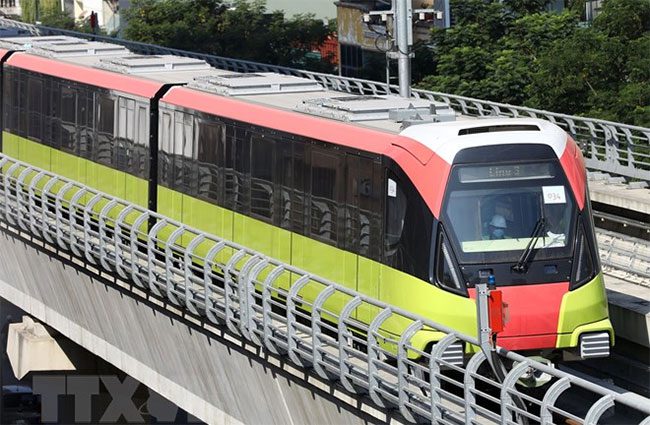
Once officially operational, the Nhổn-Hà Nội metro will operate at an average commercial speed of 35 km/h. (Photo: Huy Hùng/TTXVN)

This is an important step in the dynamic testing process, serving trial operation acceptance testing and independent safety assessment of the train. (Photo: Huy Hùng/TTXVN)
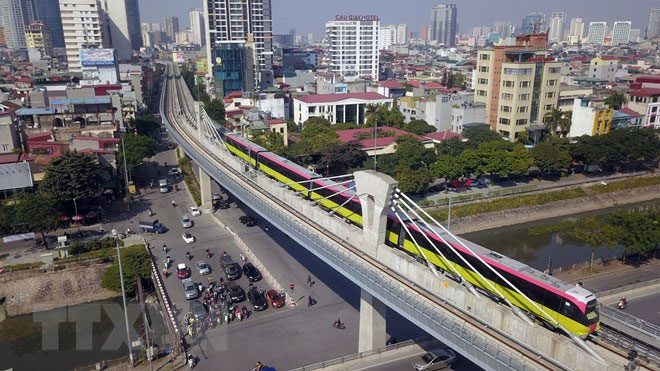
The Nhổn-Hà Nội train passes through the Cầu Giấy-Láng intersection. (Photo: Huy Hùng/TTXVN)
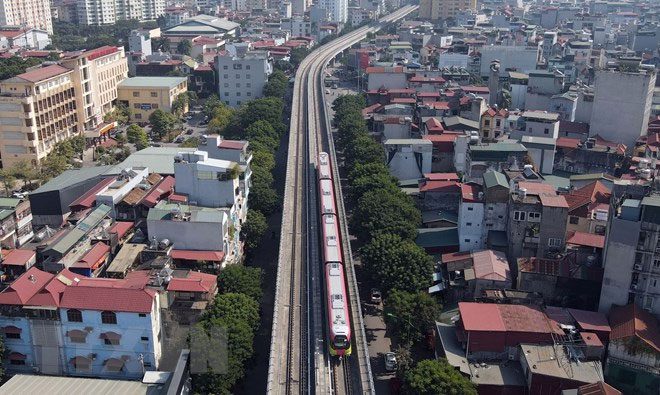
The train runs on Xuân Thủy street. (Photo: Huy Hùng/TTXVN)
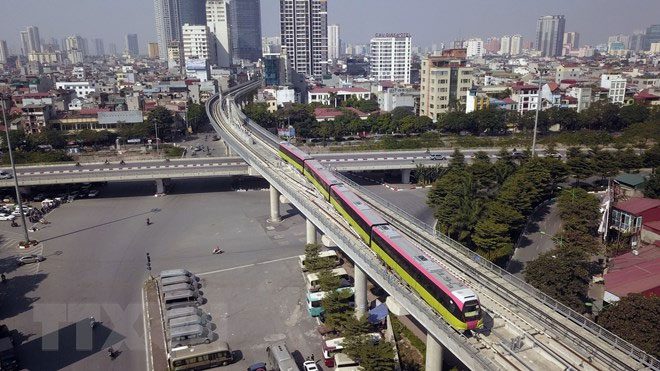
The Nhổn-Hà Nội train passes through the Cầu Giấy-Láng intersection. (Photo: Huy Hùng/TTXVN)
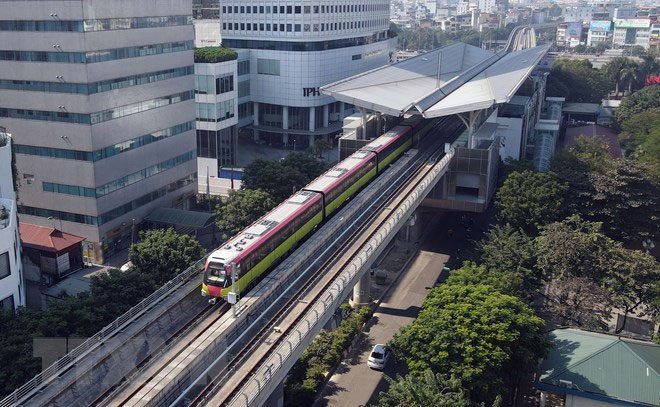
Testing route, the train departs from station S1 (Nhổn) to station S8 (Cầu Giấy) and then returns, with a distance of 8.5 km from S1 to S8. (Photo: Huy Hùng/TTXVN)
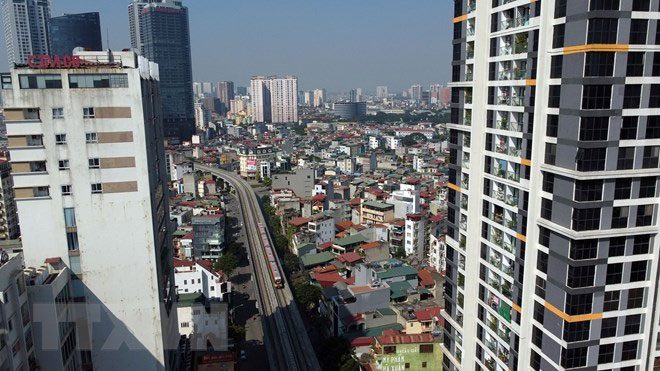
The Nhổn-Hà Nội train tests on the line. (Photo: Huy Hùng/TTXVN)
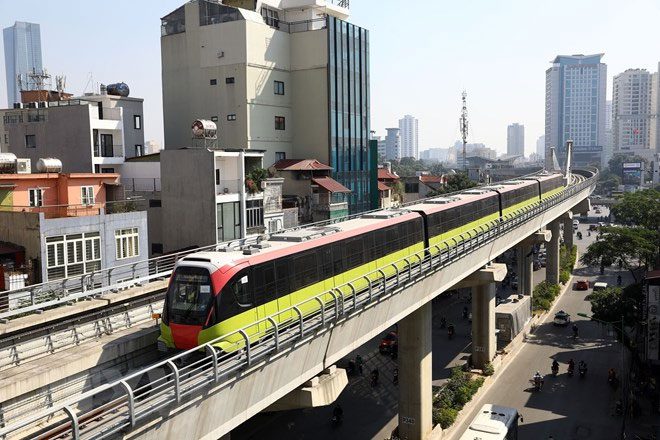
The trains will run at a speed of 80 km/h on the main line, from station S1 to station S8 (Nhổn-Cầu Giấy, approximately 8.5 km) to check the train’s operation. (Photo: Huy Hùng/TTXVN)
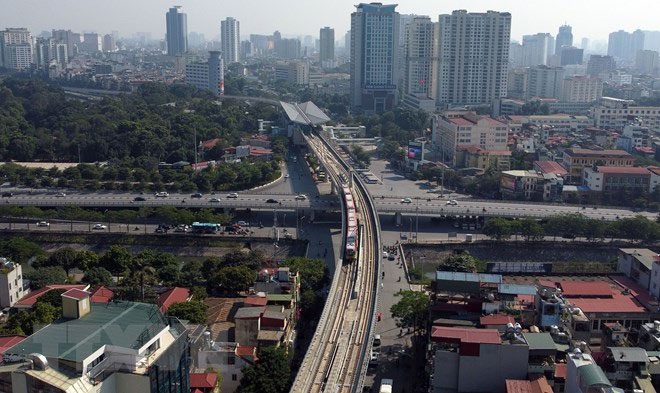
The Nhổn-Hà Nội metro line is 12.5 km long, consisting of 8.5 km elevated and 4 km underground. (Photo: Huy Hùng/TTXVN)
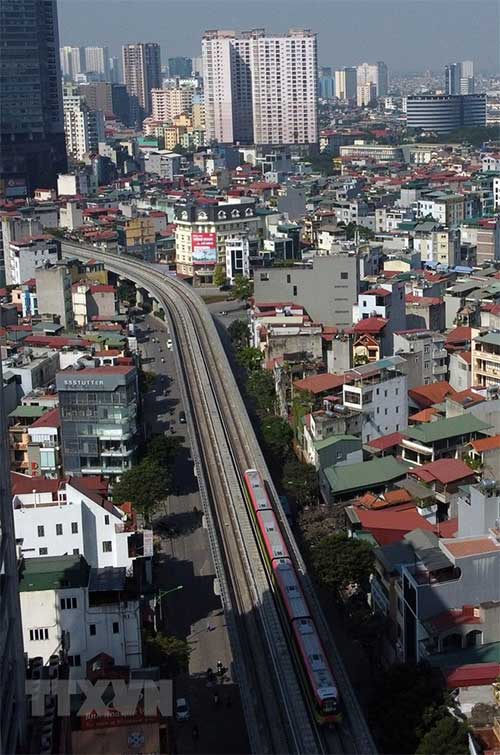
The train runs on Cầu Giấy street. (Photo: Huy Hùng/TTXVN)


















































